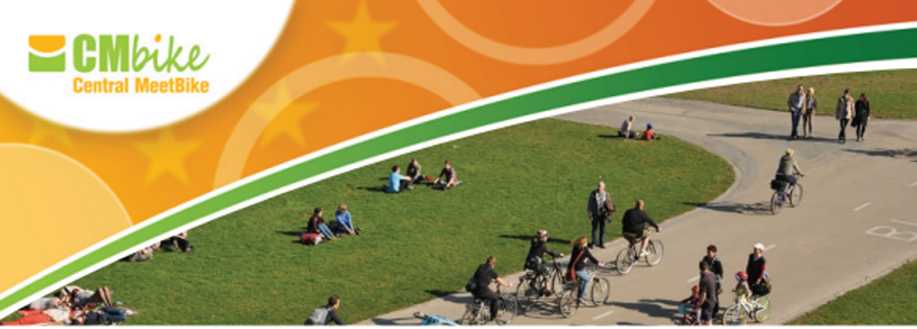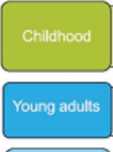9220598089

Fact Sheet S-02 - Targeting Public Relations
Introduction

Start ot Underganon
When a chtM int leanis to cysto
Start ot pnmary scbool
Start ot secondary Ktcd
Dming lcorso Imopod. mołortrłie. car)
Start Ot hijner eA*»6on
First entptoymani (induding appreniio^tp)

Reorentenl
Socal erpagoment ano lersur actroty Changes in pbypcal abit«» and needs
Stareng a <amly.'|Oty hcuttfrold Brtti ot cnfctren Changrg residenoe Oongo ot errptoymenl Carng tor a iąmly member
Identification of target groups is a pre-condition tor successful campaigning. Cyding is feasable for almost everytiody. which indudes young and old. małe and female and persons from different social groups. In addition. soft measures should not onty target citizens but also planners. politicians and stakeholders ot cyding promotion. There will be no single mes-sage that appeal to this wide rangę ot target groups. Therefore targeting public relations is crucial. Against the background ot constant addressing ot people through marketing campaigns. targeted campaigning is promising in order to increase re-cognisability ot cyding campaigns.
Target groups
Tradibonally. potential cydists have been the only target group for cyding promotion. However. in the course ot Central MeetBike. partners found that there are morę groups with spedfic needs for information. which should be provided by different means of public relation (see CMB fad sheet S-03). The main target groups can be dassified as fdlows:
Politicians and decision makers: They will be responsible for finał de-cisions on cyding measures and can demand for morę sustainable transport planning in generał. Therefore they should be aware about the State ot the art in cyding planning and .about generał benefits of cyding.
Transport and urban planners: As representatives of the city they will have to prepare concrete measures. They should therefore know about the newest design principles in mobility planning.
Stakeholders: They represent va-rious assodations and Citizen groups that might be affected by cyding measures. Thus they should be informed about municipal strategies and stan-dards in cyding planning.
Citizens: The group of dtizens is inho-mogeneous with respect to habits. per-ception and barriers to cyding. Therefore further segmentation considering the following criteria is recommended:
Ąąet demography. phase of lite: In order to promote life-long cyding. persons in all phases of life should be addressed specifically. Research has shown that there are specific times in a person's life. where he/she rethinks their daily mobility habits. These chan-ges should be used to inform about the benefits of cyding (see figurę 1).
Cyding habits: different cyding habits (frequency. purpose of cycle trips) resutt in yarying needs to public relations. Re-gular cydists may already be aware of the benefits ot cyding. but they need to be continuousty rewarded and reassured. In contrast. potenbal cydists might be motivated for cyding. if they receive morę information on the benefits of cyding and about possibilities ot cycling in the aty.
Location of place of res.dence, This mainly determines mobility options. Therefore it might be promising to de-velop campaigns to e.g. make persons aware that they are living closely to a newly constructed cyding main route that might bring them to their place of work.
Mobility styles. Transport modę choice is not only based on "hard" reasons alone. but also on emotions and symbolism. Research identified three mobility styles that bear high potential for everyday cycling: fun- and performance oriented. nature-and health oriented and avid culture oriented (Deff-ner et al (2012). p.195).
Figurę 1: Opportunities during a lite ythert new roubnes are fot-med ara fius changes in mobility behayiour are easier (source: Deffnef et al <2012). p.194)

Wyszukiwarka
Podobne podstrony:
Fact Sheet S-03 - Means of Public Relation Introduction The main challenge of public relations is to
Fact Sheet S-01 - General Recommendations for Public Relations Introduction Actors in public relatio
Fact Sheet H-02 - Cycling Facilities on the RoadOverview Street space is a limited resource. The pro
PUBLIC RELATIONS I MARKETING SPOŁECZNY 4. Segmentacja, targeting i pozycjonowanie. Przejść kilka
Fact Sheet T-03 - Options for financing measures for Cycling Introduction building 300 m of a cyde
skanuj0008 (182) polega na niedostatecznym stosowaniu przez przedsiębiorstwo produkcyjne reklamy i p
skanuj0039 (25) się, więc jedynie w sposób pośredni do wspierania procesów sprzedaży produktów na ry
MODUŁ: 1 F Publiczne relacje i promocja działań w pomocy społecznej -public relations (PR) - 10 godz
Mroziewicz K., Dziennikarz w globalnej wiosce, Warszawa 2004. Drzycimski A., Public relations - elem
8. Corporate identity i public relations /Michael Fleischer. - Wrocław :
NYTKO, Marcin. Międzynarodowe public relations Indii w zakresie budowy gospodarczej marki kraju (cou
więcej podobnych podstron